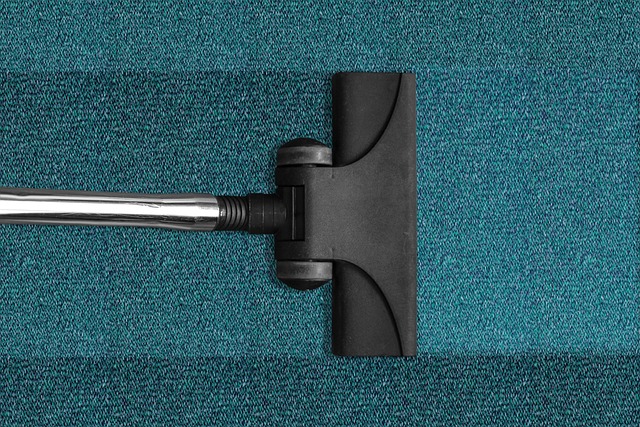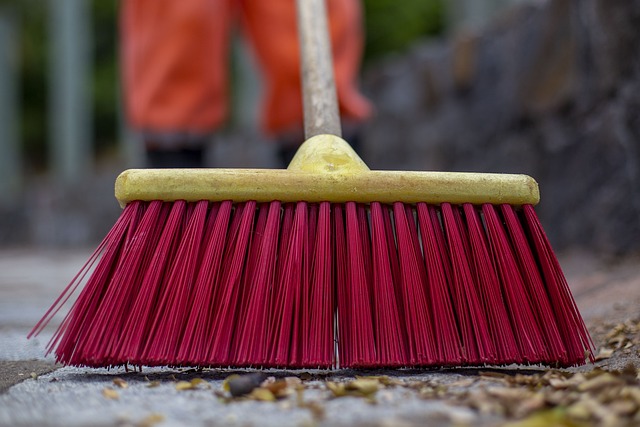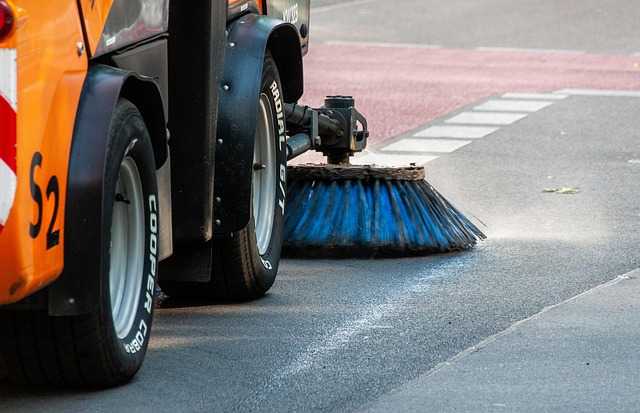In high-traffic areas, grout acts as a structural support, but it's prone to staining and damage from foot traffic, dirt, and moisture. Regular cleaning isn't enough; periodic (every 12-18 months) deep grout cleaning is essential for removing grime, mold, and mildew, restoring aesthetics, and preventing costly repairs. Specialized cleaning solutions, tools like steam cleaners or chemical treatments, and professional services are key to effective cleaning. Signs of discoloration or tile damage indicate the need for deep cleaning using neutral pH-balanced, enzyme-, or oxygen-based cleaners. Regular maintenance, sealing, quick spill cleanup, and vacuuming also preserve grout integrity in high-traffic zones. Professional help is recommended for extensive buildup or damage.
Keeping high-traffic areas looking their best starts with understanding the role grout plays. As a crucial component of flooring, grout not only provides structural support but also acts as a protective barrier. However, heavy foot traffic can take a toll, leading to discoloration, stains, and texture loss—signs that it’s time for deep grout cleaning. This comprehensive guide explores effective strategies for maintaining grout in high-wear zones, from identifying the need for deep cleaning to choosing the right products and preventing future damage.
Understanding Grout and Its Importance in High-Traffic Areas

In high-traffic areas like entryways, hallways, and public spaces, grout acts as more than just a connector between tiles. It’s a structural element that prevents water penetration and supports the overall stability of the tiling system. Over time, however, grout can become stained, discolored, and resilient to cleaning due to constant foot traffic, exposure to dirt, grease, and moisture. This is where deep grout cleaning becomes essential. It involves removing not just surface debris but also deep-seated grime, mold, and mildew that can weaken the grout and compromise the integrity of the entire floor or wall covering.
Regular cleaning practices often fall short in addressing the unique challenges posed by high-traffic areas. That’s why a thorough deep grout cleaning is crucial. It not only restores the aesthetic appeal but also ensures the longevity of the tiling system, preventing costly repairs down the line. In such environments, prioritizing deep grout cleaning every 12 to 18 months can make a significant difference in maintaining a pristine and functional space.
The Impact of Traffic on Grout: What to Expect

In high-traffic areas, grout—the material that fills the gaps between tiles—suffers from constant exposure to foot traffic, water, and various debris. Over time, this leads to a buildup of dirt, stains, mold, and mildew, making it difficult for even the cleanest surfaces to maintain their aesthetic appeal. The impact of heavy traffic on grout is profound; what starts as minor discoloration can quickly escalate into significant damage if left unaddressed. Regular deep grout cleaning becomes essential to mitigate these effects and restore the initial vibrancy of tiled spaces.
High-traffic areas demand more frequent, thorough cleaning routines. Grout in such settings should be treated with specialized deep grout cleaning solutions that can penetrate and dissolve stubborn stains. Professional cleaning services often employ advanced techniques, including steam cleaning or chemical treatments, to effectively clean and disinfect grout, ensuring a longer lifespan for the tiles and maintaining a hygienic environment.
Visual Signs Your Grout Needs Deep Cleaning

If your grout is looking less than its best, it might be time for a deep grout cleaning. Even in high-traffic areas, proper maintenance can keep grout looking fresh and new. Look out for these visual signs that indicate your grout requires a more intensive cleaning approach:
Discoloration is often the first noticeable sign. Grout can yellow, brown, or even develop green stains over time due to dirt, mold, or mildew buildup. This is especially prominent in areas with high moisture levels. Cracks and gaps between tiles are another indicator. As grout ages, it can weaken and shrink, leading to visible spaces that attract dirt and make cleaning more challenging.
Benefits of Regular Grout Maintenance

Regular grout maintenance is an essential aspect of high-traffic area care, offering numerous advantages that extend far beyond aesthetics. When grout is left uncleaned and untreated, it becomes a breeding ground for bacteria, mold, and mildew, which can cause health issues for occupants and compromise air quality. A deep grout cleaning process effectively removes these allergens and pathogens, creating a healthier living or working environment.
Moreover, maintaining grout on a regular basis significantly delays the need for costly repairs and replacements. Over time, grout can darken and discolour due to dirt, oil, and general wear and tear. A timely deep grout cleaning not only restores its original appearance but also prevents the disintegration of tiles, ensuring the longevity of the overall flooring or tiling system. This proactive approach saves money and ensures that high-traffic areas remain visually appealing and functional for years to come.
Choosing the Right Cleaning Solutions for Different Grout Types

When it comes to high-traffic areas, choosing the right cleaning solutions is paramount for effective deep grout cleaning. Different grout types—from ceramic to porcelain and natural stone—require tailored care to prevent damage or discolouration. For instance, acidic cleaners can be harmful to some stones, while others may need a more abrasive approach for tough, ingrained dirt.
Opting for neutral pH-balanced solutions is generally recommended, as they are safe for all grout types and effective in removing surface grime. For deeper cleaning, enzyme-based or oxygen-based cleaners can help break down organic stains without damaging the grout’s finish. Remember, regular maintenance and prompt cleaning of spills are key to preserving the appearance and longevity of your grout in high-traffic zones.
Effective Methods for Deep Grout Cleaning

Deep grout cleaning is essential in high-traffic areas where dirt, grime, and stains can quickly accumulate. One effective method involves using specialized grout cleaners that contain powerful enzymes or acidic solutions to dissolve tough, ingrained residues. These products are typically applied with a brush or sponge, allowing for deep penetration into the grout lines. For harder-to-reach areas, a grout cleaning tool with a flexible attachment can be utilized to scrub away dirt and grime effectively.
Another popular approach is steam cleaning, which uses hot, pressurized water vapor to loosen and remove contaminants. This method is not only eco-friendly but also highly effective in killing bacteria and leaving the grout lines fresh and clean. Additionally, baking soda and vinegar mixtures or commercial grout cleaners with bleach can be used for a thorough deep grout cleaning, ensuring that high-traffic areas remain tidy and hygienic.
Tips for Preventing Future Grout Discoloration and Damage

Regular maintenance is key to preventing grout discoloration and damage in high-traffic areas. After completing a deep grout cleaning, seal the grout lines with a quality sealer to create a protective barrier against dirt, stains, and moisture. This simple step can significantly extend the life of your grout and prevent future issues.
Additionally, keeping the area clean and dry is essential. Promptly address any spills or leaks by blotting them up immediately with a absorbent cloth or paper towel. Regularly vacuum and mop the floor to remove loose dirt and grime before it has a chance to settle into the grout lines. By combining these preventive measures with periodic deep grout cleaning, you can ensure that your high-traffic areas remain looking their best for years to come.
When to Consult a Professional for Grout Restoration

If your high-traffic areas, such as entryways, kitchens, or bathrooms, are showing signs of worn-out grout—like discolored, stained, or broken lines—it might be time to consider professional help for a deep grout cleaning and restoration. While DIY methods can be effective for minor issues, heavy buildup or extensive damage often require specialized equipment and expertise.
Professional grout cleaners have access to powerful tools like high-pressure wash machines, which can penetrate deeply into the grout lines to remove stubborn dirt, mold, and mildew. They also understand the different types of grout and ceramics, allowing them to choose the safest and most effective cleaning methods for your specific situation. Regular deep grout cleaning by professionals is especially recommended for heavily trafficked spaces to prevent future damage and maintain a pristine, welcoming environment.
